Month Eleven in Málaga – Las dos Claudias, luck and chance, Filipinos–the cookie, and, oh, yeah, Carnaval
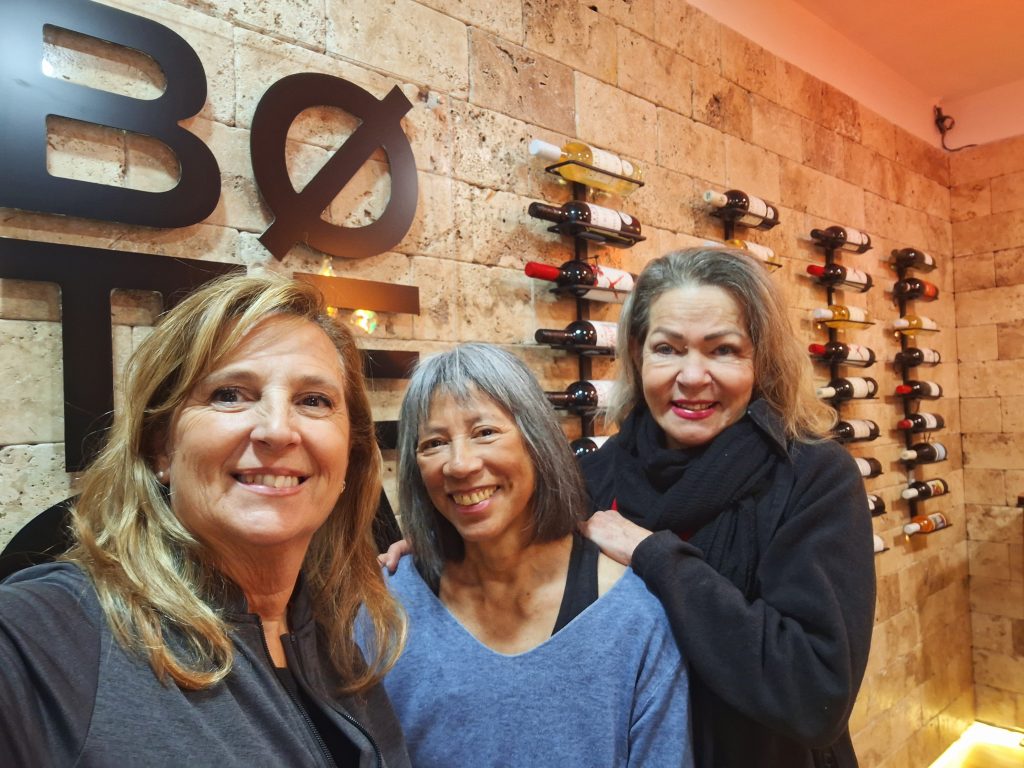
I don’t usually start with an update on how my Spanish is going, but… my Spanish is going pretty well! Thanks in large part to two lovely people, both named Claudia.
Spanish Acquisition Report – Learning with the Claudias, movies, and bookstore events

Claudia de Argentina y Claudia de Venezuela
In my second month in Malaga, Seattle friend Arline introduced me via social media to her cousin Claudia, a resident and citizen of Spain by way of Venezuela. Since then, Claudia has become my friend and a wonderful source of Spanish practice and learning for me. In our talks, she will often stop and ask me explico? or me entiendes? and I’ll either reassure her with a vigorous nod, or wince and admit my lack of comprehension. Sometimes she’ll know by the look on my face that I’m losing the thread of the conversation. I’m hoping such hiccups in our communication will diminish with time though I doubt they’ll ever disappear completely. I treasure Claudia’s friendship and how it’s helping me acquire what I need most to deepen my experience of people and places in Spain. Is it possible to have more than one Claudia in your life? As it turns out, yes!
I’m always looking for more opportunities to have conversations in Spanish and one recent afternoon, I stopped in at Bottega, a wine and coffee bar that serves delicious food and drink. It was nearly empty that afternoon so it was a good place to read, study, or write. I’m not sure how it started but when the owner came over and asked me for my order, we were suddenly in a twenty-minute conversation before I ordered tea and pan tostado. She said anytime I wanted to practice my Spanish to come by, so I have taken her up on that. Her name is also Claudia and she, her husband, and their three sons emigrated from Argentina three years ago. She is as lovely as the other Claudia. Las dos Claudias me están ayudando mejorar mi español.
For more practice in listening, I watch the Spanish series Cuéntame Cómo Pasó, which ran for twenty-nine seasons, following the lives of the Alcántara family in the last years of the Franco dictatorship and through and beyond Spain’s transition to democracy. It takes me several sittings to complete an episode because I need to pause the video a hundred times or so to rewind and relisten. Okay, slight exaggeration, but the characters do speak at the velocity of a high-speed train.
Also, I recently watched a movie recommended by my daughter Ana called Tambien La Lluvia, about a Spanish movie director, producer, cast, and crew who go on location in Bolivia to shoot a film about the Spanish conquest of the Americas, the cruelty with which the indigenous peoples were treated, and the friars who pleaded for their more humane treatment. I learned the word podar from this movie. It means to prune. There’s a scene when the Spanish capitán is displeased with the amount of gold one of the enslaved indigenous workers has sifted from the river and shouts ¡A podar! whereupon the man is dragged to a tree stump and his hand is lopped off with an axe. A horrific but well-chronicled practice.
I’ve begun attending readings at bookstores here much as I did in Seattle. The difference is that here the goal for me is not so much to learn about the book and the author but to just try to understand the Spanish. Even though I leave the event with a discombobulated brain, it’s still nice to sit in a bookstore among other book lovers and listen to a conversation about books.
Luck and Chance
The trajectory of our lives is so often determined by luck and chance. Every day, I marvel that after working at the same job for thirty years and living a very non-exceptional life, I’m now residing in Spain, writing in an apartment in the Centro Histórico, reading in cafes, taking morning walks to the beach, and delighting in the constant celebrations. Every day I am grateful for this life here. But what if bad luck and cruel chance had diverted my trajectory into a ditch? Or prison. Like it did for Jean Wilson.

Suerte y azar is the theme of a series of works by the Spanish painter Eduardo Gruber which I have visited three times at the Centro de Arte Contemporáneo. The series Femme fatale-amores platónicos is part of Gruber’s show called nadie is nada, much of which incorporates the written word as an integral part of the paintings and drawings. Using the mug shots of women he found in the Justice and Police Museum in Sydney, Australia, Gruber redraws the circumstances of these women’s lives and writes an alternative story for each that allows for better luck and chance, which in turn allows them to exercise more agency and more creativity. For Jean Wilson, Gruber sends her to Mexico, though he says it’s a mystery as to how she got there. Nor is it known how she came to meet Frida Kahlo. It was simply coincidence! And though she spoke Spanish with difficulty, she nevertheless participated in heated debates in the intellectual and progressive salons in Mexico City. Unfortunately, Gruber tells us that after Frida’s death, Jean is never heard from again. But at least she had that unforgettable (if wholly imagined) portrait with Frida.
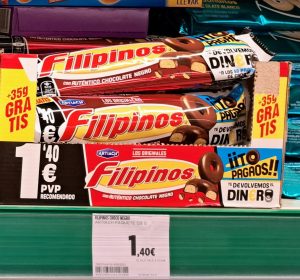 Filipinos, the Cookie
Filipinos, the Cookie
I’ve long known about this brand of cookie sold here in Spain, made in Orozko in Northern Spain and exported to other European countries. I’ve never been amused by the name. And while some people may dismiss it as harmless, when you consider the historical relationship between the two countries, that of colonizer and colonized, you might also not be amused.
When I see it in the grocery store, I make a face. The other day the man ahead of me at the grocery store bought a package of Filipinos. I wanted to ask him why he liked eating Filipinos. I wanted to ask him what he thought of a cookie being named after a people, one that had been colonized and ruled by Spain for more than three hundred years. I wanted to ask him if he ever considered that Filipinos might not like having a cookie named them, that at one time, the Filipino government petitioned Spain to rename its cookie, but it refused. But no, all this Filipino Mexican American did was make a face. At least Filipinos, the cookies, are prohibited from being sold in the Philippines.
What I’m Reading
Just finished A Moveable Feast by Ernest Hemingway, suggested by writer friend Jennifer Munro who has also suggested I write A Moveable Feast inspired version of my life in Málaga. While I lack famous writer friends in Málaga to write about, I have met some interesting people here and visited amazing sights and I have indeed begun writing essays which I hope will become a book.
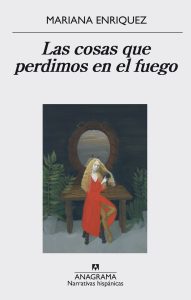 Also just finished All About Me by Mel Brooks because I love the title and I love Mel Brooks and what a miracle of laughs he is.
Also just finished All About Me by Mel Brooks because I love the title and I love Mel Brooks and what a miracle of laughs he is.
Still reading stories from Las cosas que perdimos en el fuego by Mariana Enriquez, an Argentine writer whose work is classified as horror, a genre I don’t normally read because I’m such a scaredy cat. Maybe reading them in Spanish removes the horror aspect a bit since I often have to pause to look up words. Still, I don’t read them at night.
And I recently downloaded a sample of Una historia de la guerra civil que no va a gustar a nadie by Juan Eslava Galán. At 448 pages, it’s too daunting for me to read the entire thing in Spanish, so I’m settling for the sample.
Just started reading Yellowface by R.F. Kuang. Wow!
Carnaval
I end this post with the way February began– with Carnaval, a celebration that in Spain can be traced back to the Middle Ages. Suspended during the Franco years, the festivities are in loud and colorful swing these days. The god and goddess competition opened the two-weekend celebration with contestants in spectacular and elaborate attire, each the centerpiece of a float they pulled along with them as they flounced, swayed, glided, or shimmied according to the theme of their costume. The very sexy, Gumby-limbed ButchQueens delighted with their strutting, dancing, and posing. The drag queens, regal and divine in their soaring headdresses and impossibly high platform heels, were every kind of superlative. Singing groups in costume performed in the streets and on stage, regaling listeners with original songs that parodied Spanish politics and culture. Parades left a carpet of confetti in their wake. Everything was loud, colorful, and raucously joyful. It all culminated in the Entierro del Boquerón which is when the final parade escorted the giant anchovy sculpture to the beach to be torched, thus putting an end to the indulgences just ahead of the repentance and self-denial of Lent. There are plenty more Carnaval photos plus videos on my Facebook page if you want to watch the god and goddess candidates in motion, the ButchQueens dancing in stilettos, and the burning of the boquerón.
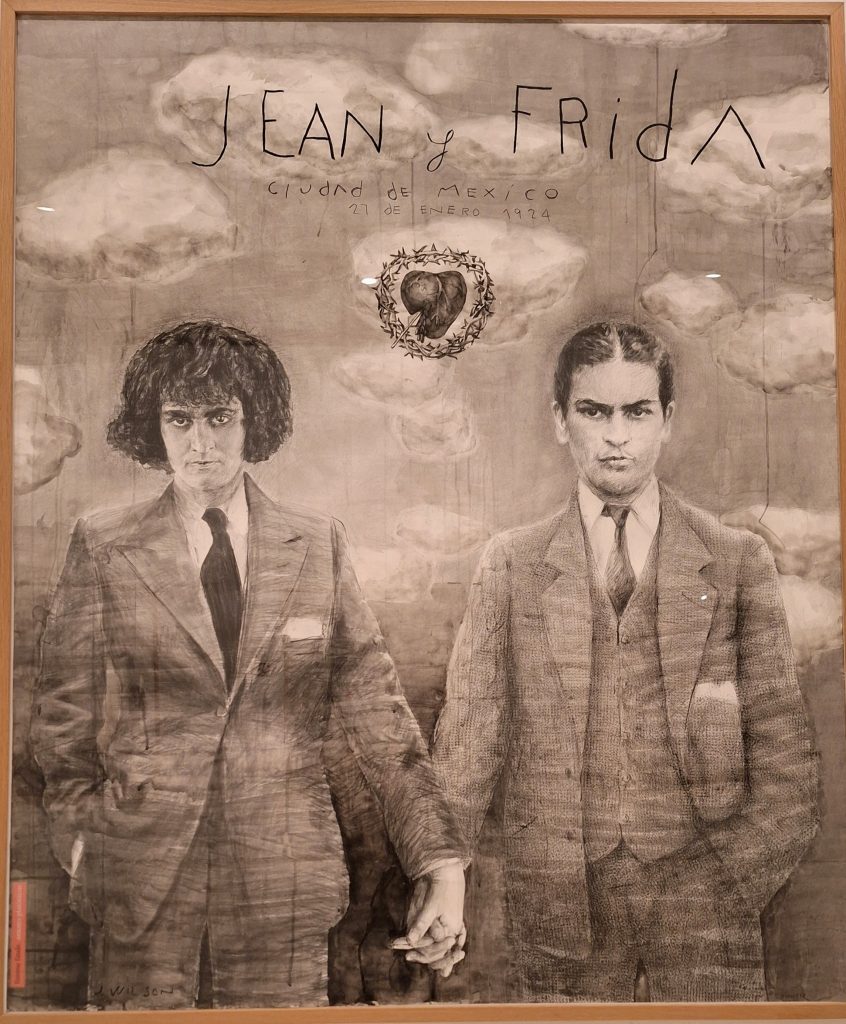
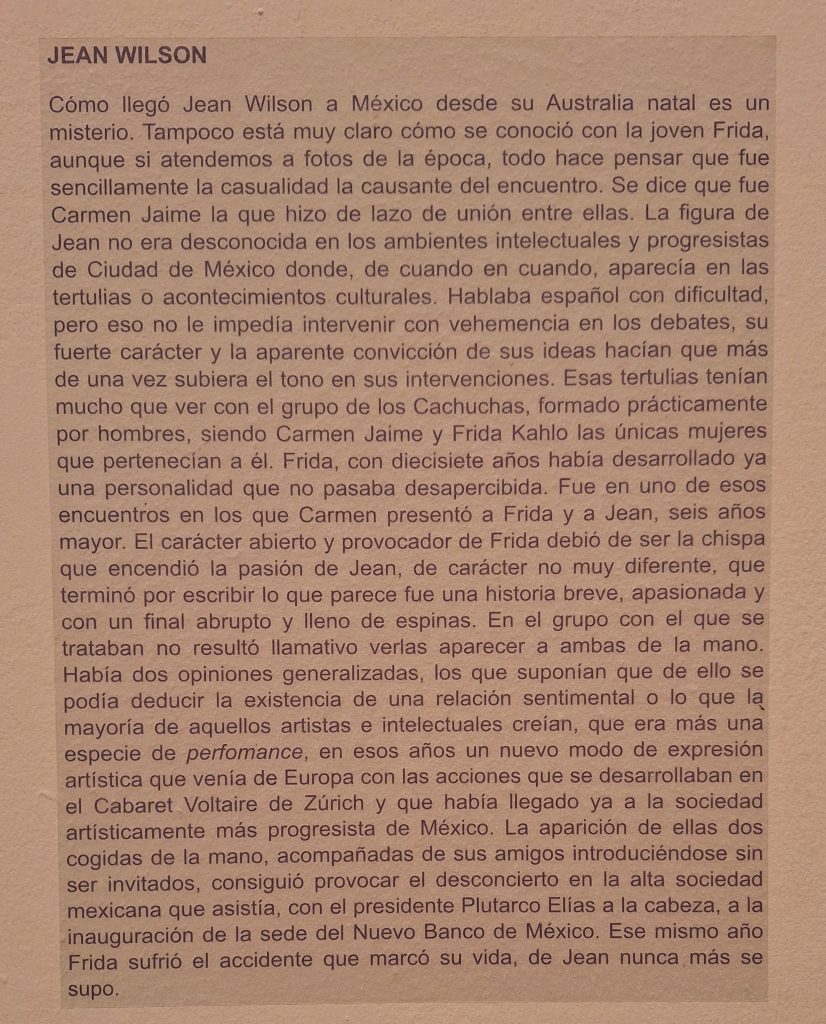
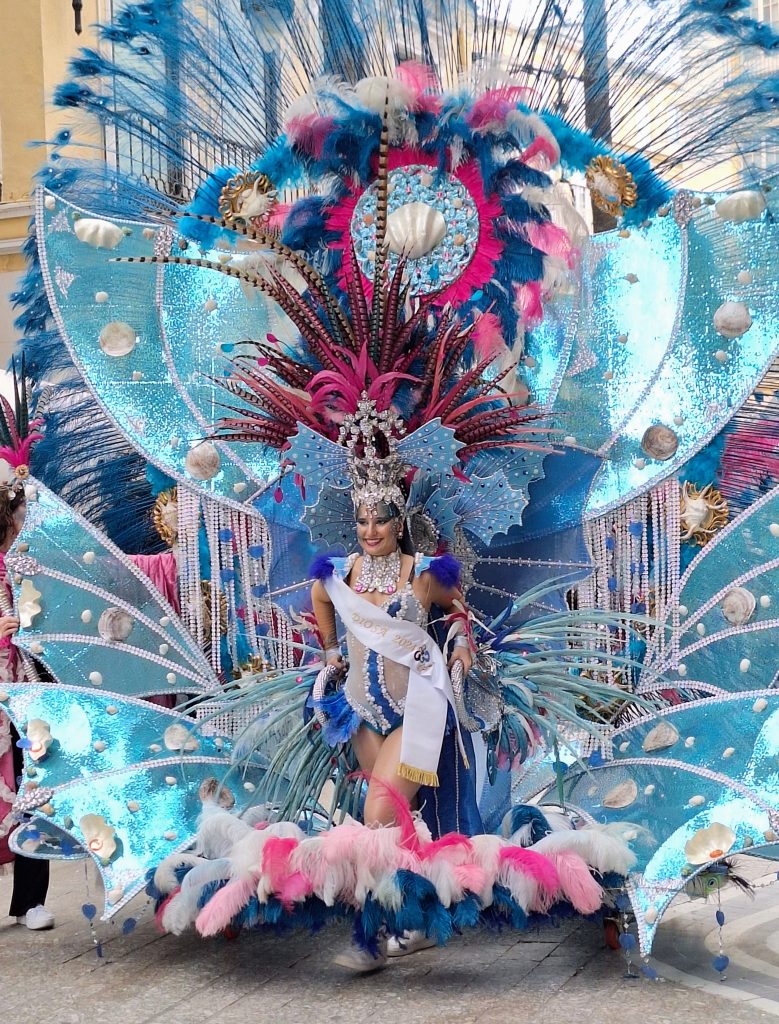
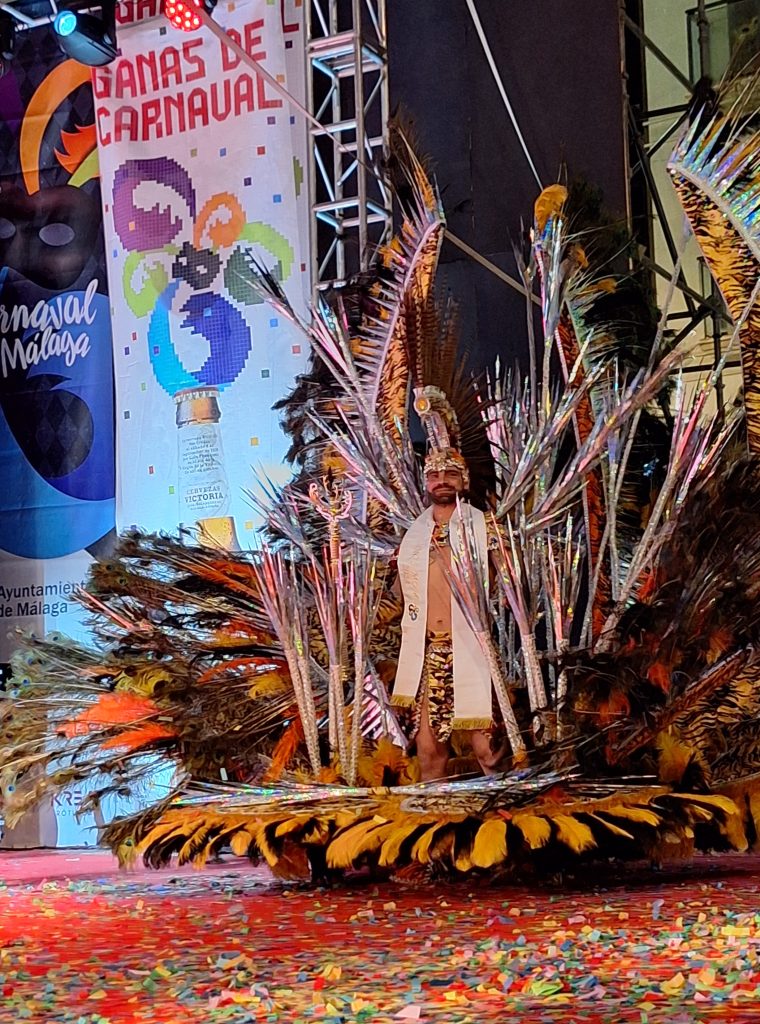

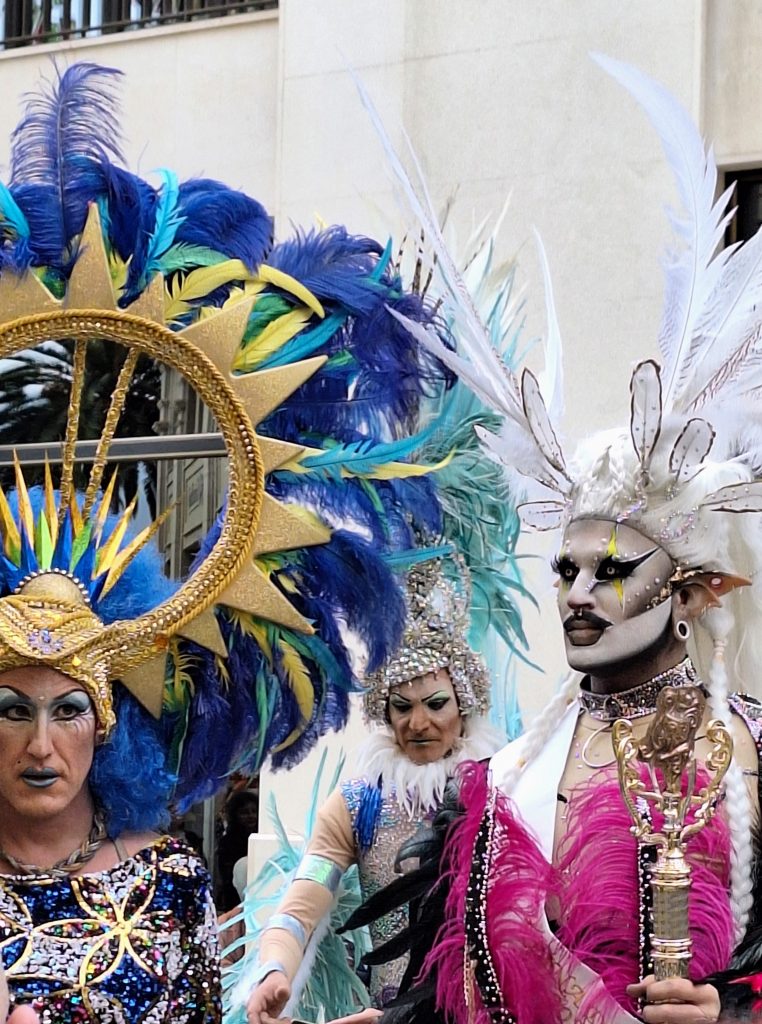
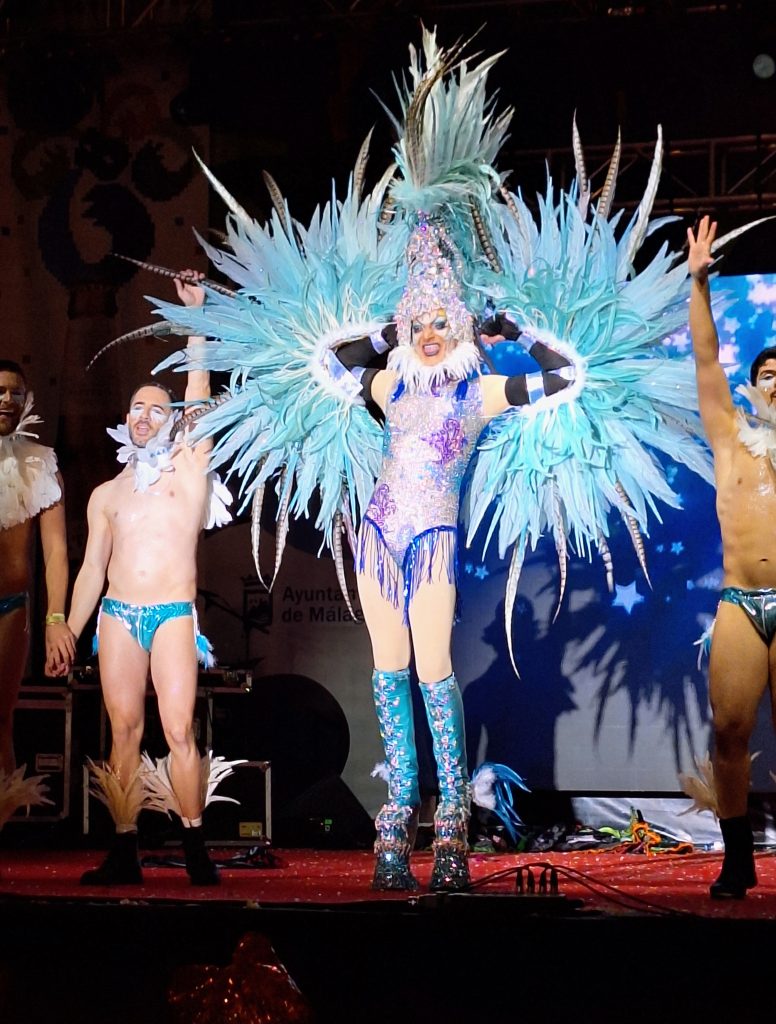
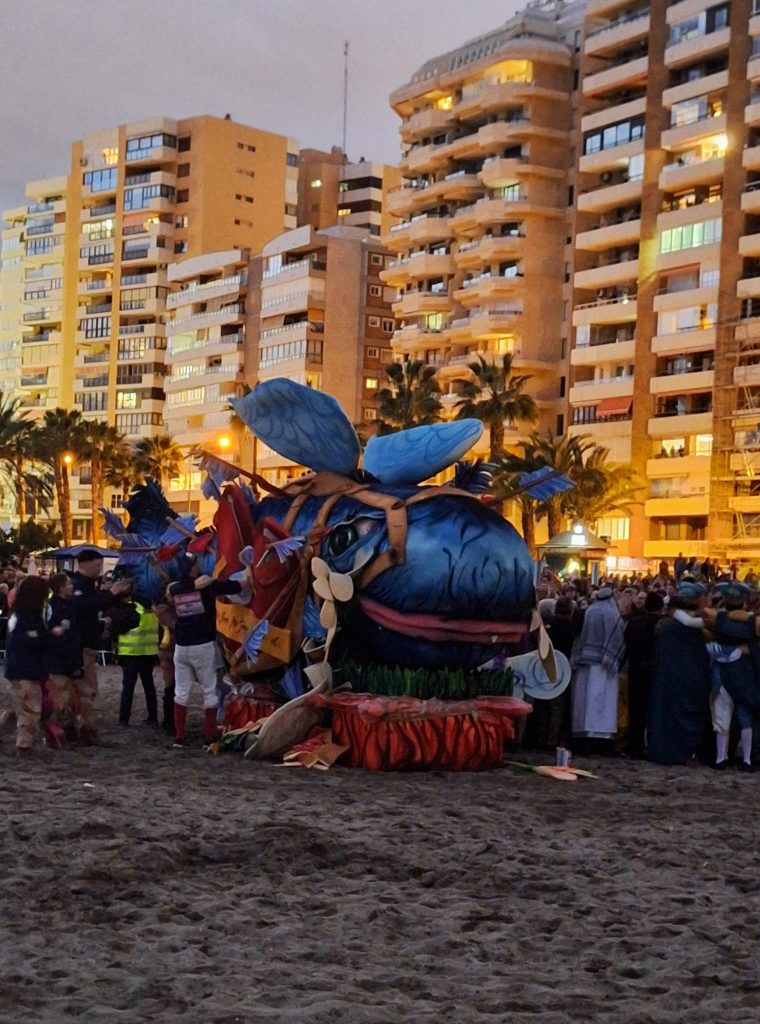
Wow, Hermana Donna! I read “Month Eleven” and very much enjoyed! Plan to read past posts about “Past Months in Malaga”! Thx to you for enjoyable reading! You are always in my thoughts! Regards to James!
Hermana Ber, que ilusión verte aquí! Gracias por leer mi blog y gracias por ser parte de mi familia.